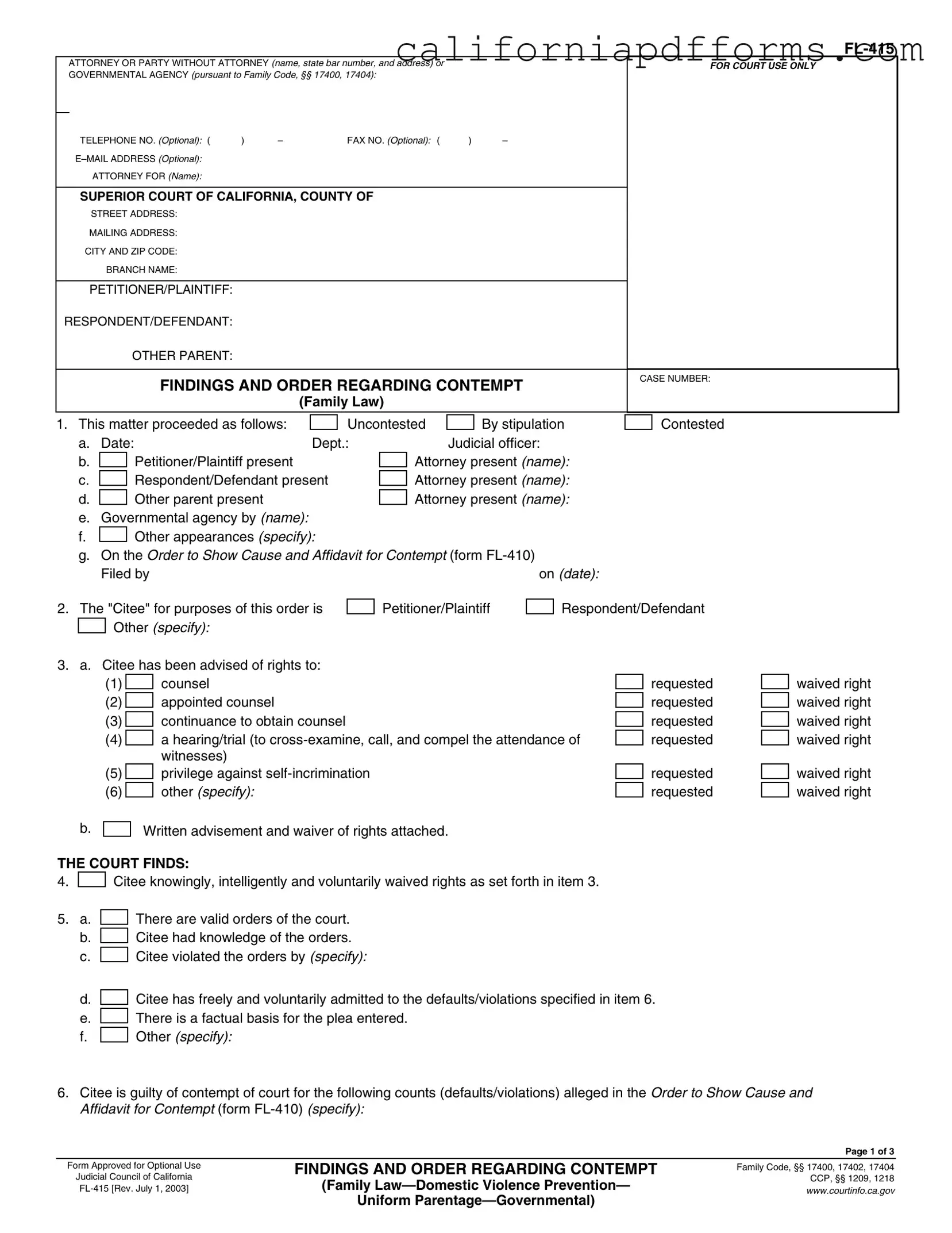The California FL-415 form, titled "Findings and Order Regarding Contempt," is used in family law cases to document the court's findings and orders related to a contempt proceeding. This form is crucial when one party, known as the "citee," is accused of violating a court order, such as failing to pay child support or not adhering to visitation schedules. The form outlines the court's decisions based on the evidence presented during the hearing.
The FL-415 form must be completed by the court, but it is initiated by the petitioner or the party who filed for contempt. This includes parties involved in family law matters, such as parents seeking enforcement of child support orders or visitation rights. It is important for the citee to be present during the hearing, as their rights and any violations will be discussed and documented on this form.
The FL-415 form requires various details, including:
-
The names and contact information of the parties involved, including the petitioner, respondent, and any other parents.
-
The judicial officer's name and the court department handling the case.
-
A summary of the contempt proceedings, including whether they were contested or uncontested.
-
Findings related to the citee's rights, knowledge of court orders, and any violations.
-
Orders from the court regarding penalties, community service, and compliance requirements.
What happens if the citee is found guilty of contempt?
If the court finds the citee guilty of contempt, several consequences may follow. The court may impose penalties, which can include:
-
Community service hours that must be completed by a specific date.
-
Fines or administrative fees payable to the court or relevant agencies.
-
Probation conditions that require compliance with existing court orders, such as child support payments.
-
Potential jail time, which may be suspended under certain conditions.
It is essential for the citee to understand these consequences and comply with the court's orders to avoid further legal issues.
Yes, the findings and orders made in the FL-415 form can be appealed. If a party believes that the court made an error in its ruling, they may file an appeal to a higher court. However, it is important to note that there are strict timelines and procedures for filing an appeal. Consulting with a legal professional is advisable to ensure that all necessary steps are followed correctly.
What should a citee do if they cannot comply with the court's orders?
If a citee is unable to comply with the court's orders, it is crucial to address the situation proactively. They should:
-
Contact the court or the local child support agency to explain their circumstances.
-
Request a modification of the orders if there has been a significant change in their situation.
-
Keep detailed records of any efforts made to comply with the court's orders.
Open communication with the court can help prevent additional penalties or contempt findings.
